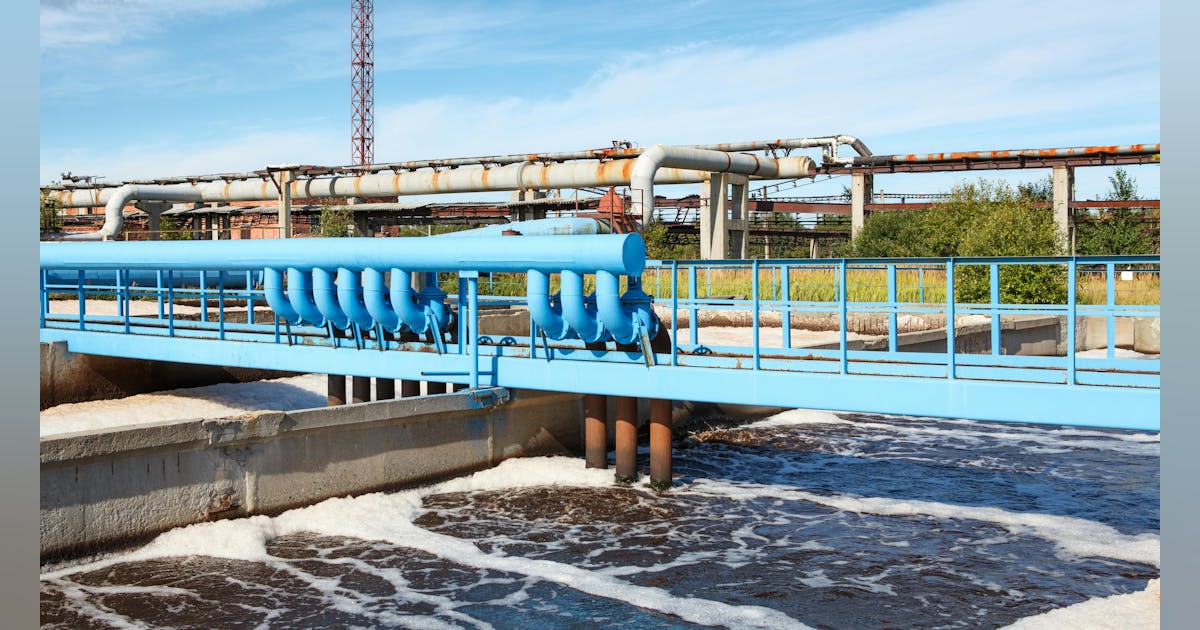Choosing the best water treatment polymer ensures better flocculation results.
Choosing the best water treatment polymer ensures better flocculation results.
Blog Article
Discover How Water Treatment Polymer Functions in Effective Wastewater Treatment Solutions
The assimilation of water therapy polymers into wastewater treatment systems represents a considerable improvement in boosting operational effectiveness. These polymers work largely through mechanisms of coagulation and flocculation, efficiently aggregating put on hold fragments for easier removal. Their adaptability throughout differing ecological problems adds to boosted sedimentation and lowered sludge quantity. Understanding the certain kinds of polymers and their applications can disclose much deeper insights into optimizing therapy processes. What implications do these developments hold for future wastewater administration methods?
Summary of Water Treatment Polymers
The performance of wastewater administration rests on the application of various therapy agents, amongst which water treatment polymers play a pivotal duty. These synthetic or all-natural polymers are created to enhance the performance of physical and chemical processes in wastewater therapy systems. Their main function is to assist in the gathering of put on hold particles, ultimately boosting the overall top quality of treated water.
Water treatment polymers can be categorized right into several classifications, consisting of flocculants, coagulants, and dispersants. Coagulants counteract the charges of suspended bits, permitting them to come together and work out a lot more properly.
The application of these polymers not only enhances the removal of impurities but also enhances the functional performance of therapy plants. Additionally, the selection of proper water therapy polymers is important, as their efficiency can differ based upon factors such as water chemistry, temperature, and turbidity levels. Generally, water therapy polymers are crucial components in modern wastewater management techniques, adding to cleaner water and sustainable environmental methods.
Devices of Coagulation and Flocculation
Coagulation and flocculation are basic processes in wastewater treatment that embody the concepts of bit interaction and aggregation. These devices are vital for eliminating suspended solids, colloids, and other impurities from water. Coagulation includes the destabilization of suspended fragments, commonly attained with the addition of coagulants such as steel salts. These coagulants reduce the effects of the electrostatic charges that maintain bits apart, promoting first aggregation.
Following coagulation, flocculation happens, characterized by the gentle blending of water to urge the formation of larger aggregates, or flocs. Throughout this phase, polymers play a significant function by bridging in between particles, improving the development of these larger accumulations. The physical and chemical interactions throughout flocculation cause a boosted dimension and density of the fragments, facilitating their succeeding removal via sedimentation or filtering.
The performance of coagulation and flocculation processes is affected by numerous elements, consisting of pH, temperature, and the nature of the pollutants existing. Understanding these systems permits for the optimization of wastewater therapy systems, resulting in enhanced elimination efficiencies and general water top quality. The cautious option and application of coagulants and flocculants are essential for successful wastewater administration.
Sorts Of Water Therapy Polymers
Frequently utilized in wastewater treatment, water treatment polymers are important for improving the effectiveness of coagulation and flocculation procedures. These polymers can be generally classified right into 3 main types: anionic, cationic, and non-ionic.
Anionic polymers, which carry a negative cost, are specifically efficient in treating wastewater with positively billed impurities. On the other hand, cationic polymers possess a positive cost and are commonly utilized in view applications where negatively charged fragments dominate, such as in certain commercial effluents.
Non-ionic polymers, doing not have a charge, work as functional agents that can enhance the efficiency of both anionic and cationic polymers. Their main role entails boosting the viscosity of the wastewater, thereby boosting the general retention time of the flocs in the treatment system.
Comprehending the distinct features of these kinds of water treatment polymers permits the optimization of wastewater therapy procedures, inevitably resulting in boosted elimination effectiveness and better water high quality.
Applications in Wastewater Treatment

In community wastewater treatment plants, water therapy polymers help in reducing the volume of sludge produced throughout the therapy procedure. water treatment polymer. This decrease not only optimizes operational effectiveness yet additionally minimizes disposal expenses related to sludge administration. In addition, polymers contribute in treating industrial effluents, where they help in the removal of specific contaminants such as heavy metals and organic pollutants, making sure compliance with environmental guidelines

Furthermore, water therapy polymers are made use of in the improvement of biofiltration systems, where they enhance microbial activity and overall treatment efficiency. Their duty in membrane layer procedures, such as reverse osmosis, likewise can not be neglected, as they add to membrane layer fouling control and lengthen the life expectancy of filtering systems. Through these diverse applications, water therapy polymers are necessary for accomplishing efficient and sustainable wastewater monitoring.

Advantages of Utilizing Polymers
Making use of water therapy polymers in wastewater systems uses various advantages that substantially enhance therapy efficiency and total operational efficiency. First of all, these polymers act as reliable coagulants and flocculants, promoting the Resources gathering of suspended solids and promoting their removal. This process leads to clearer effluent and reduces the problem on downstream treatment stages.
In addition, polymers improve the dewatering procedure by enhancing the sedimentation attributes of sludge. This results in minimized quantity and weight of waste material, inevitably lowering disposal expenses. In addition, their capability to operate throughout differing pH levels and temperature levels makes certain flexibility in various wastewater atmospheres.
Polymers likewise add to the stablizing of biological processes by supplying nutrients and keeping optimum conditions for microbial growth - water treatment polymer. This boosted microbial task help in the breakdown of raw material, improving total therapy effectiveness
Additionally, using polymers can cause minimized chemical use, decreasing operational costs and environmental impact. By optimizing the treatment process and improving sludge administration, water treatment polymers play a vital duty in advertising lasting wastewater monitoring techniques, straightening with governing criteria and ecological goals.
Final Thought
To conclude, water therapy polymers are necessary for improving the effectiveness of wastewater treatment systems. Their ability to help with coagulation and flocculation processes leads to improved sedimentation and lowered sludge quantity, therefore enhancing treatment performance. The various kinds of polymers readily available for various applications guarantee versatility across varied problems, eventually leading to clearer effluent. The advantages of making use of these polymers highlight their importance in achieving reliable and inexpensive wastewater monitoring services.
Report this page